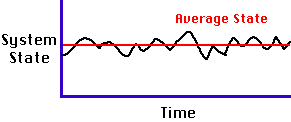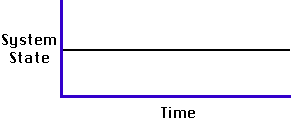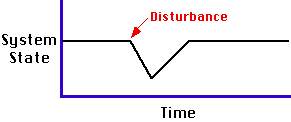Ch 1: Foundations of Environmental Systems and Societies
1.1 - Environmental value systems
Environmental value system (EVS): a worldview that shapes the way an individual or group perceive and evaluate environmental issues
- Examples: culture, religion, economic and socio-political context
Who is included in the environmental movement?
- Influential individuals: often use social media to raise awareness
- Independent pressure groups: they use awareness campaigns to make a change. They influence the government and corporate business organisations → Non Governmental Organisations (NGO’s)
- Corporate businesses: multinational corporations (MNC) and transnational corporations supply consumer demand and create environmental impact
- mining for minerals or burning of fossil fuels
- Governments: make policy decisions which include environmental ounces, such as planning permission for land use, applying legislation to manage emissions controls over factories
- Intergovernmental bodies: these groups hold summits about earth to bring governments, NGOs and corporations to consider environmental and world development issues
Categories of EVS:
- Ecocentric worldview: puts ecology and nature as central to humanity (less materialistic lifestyle)
- Deep ecologists
- Soft reliant, soft ecologists
- Anthropocentric: believes humans must sustainably manage the global system
- Humans are not dependent on nature but nature is there to benefit from mankind
- Technocentric: believes that technological developments can provide solutions to environmental problems
- Environmental managers → technocentrists
- Extreme technocentrists → cornucopians
Cornucopians: people who see the world as having infinite resources to benefit humanity. They think that technology can solve any problem
Environmental managers: believe that we have an ethical duty to protect and nurture the earth
Biocentric: thinkers see all life as shaving value for its own sake, not just for humans. Humans should not cause premature extinction of any species
- the ultimate source of energy for all organisms → sun
Deep ecologists: put more value on nature than humanity. They believe in biologists, universal rights where all species and ecosystems have value and humans cannot interfere with it
1.2 - Systems and Models
System: set of interrelated parts working together to make a complex whole, can be living or nonliving. Systems are all more than the sum of their parts
- Can exist in many scales (large or small)
- Can be open, closed, or isolated, though most systems are open
- Material and energy undergo transfers and transformations in flowing from one storage to the next
- Biosphere = atmosphere + lithosphere + hydrosphere + ecosphere
Systems can be closed, open, or isolated
Biome: can be seen as an ecosystem. It helps if the ecosystem has clear boundaries
Biosphere: is a fragile skin on planet earth. Includes atmosphere (air), lithosphere (rocks), hydrosphere (water)
All systems have:
- Systems (stores of matter/energy)
- Flows (into, through, and out of the system)
- Inputs
- Outputs
- Boundaries
- Processes (which transfer or transform energy or matter from storage to storage)
Matter (material) and energy flow through ecosystems as:
- Transfers: when energy or matter flows and changes location but does not change its state
- Movement of material → in a non-living process
- The movement of energy
- Movement of material through living organisms
Transformations: when energy or matter flow and changes its state, a change in the chemical nature, a change in state or energy
- Matter to matter
- Matter to energy
- Energy to energy
Transfers require less energy → more efficient than transformations
An open system exchanges matter and energy with their environments; all ecosystems are open systems
- Examples: in forest ecosystems:
- Plants fix energy from light energy entering the system during photosynthesis
- Nitrogen from the air is fixed by soil bacteria
- Water is lost through evaporation and transpiration from plants
A closed system exchanges energy (not matter) with its environment. They are extremely rare in nature
- Light energy enters the earth’s ecosystem in large amounts and some is eventually returned to space as long-wave energy (heat). This is how a closed system operates.
An isolated system neither exchanges matter nor energy with its environment. They do not naturally exist; the entire universe is an isolated system.
Models are simplified versions of systems, it could be:
- A physical model (a wind tunnel)
- A software model (climate change or evolution)
- Mathematical diagrams
- Data flow diagrams
Advantages of Models:
- Easier to work with than complex reality
- Used to predict the effect of a change of input
- Can be applied to other situations
- Used to visualise small and large things
- Can help us observe patterns
Disadvantages of models:
- Predictions may be inaccurate
- Accuracy is lost
- Model will be wrong if our assumptions are wrong
Sustainability is achieved only when economy, society, and the environment overlap
1.3 - Energy and Equilibrium
- First law of thermodynamics: principle of conservation of energy
- Principle of conservation of energy: states that energy in isolated systems can be transformed but not created or destroyed
- Second law of thermodynamics: states that energy is transformed through energy transfers
- Entropy: a measure of the amount of disorder in a system
- Refers to the spreading out of dispersal of energy
- More energy = less order
- When entropy is used to do work, some energy is always wasted as heat energy
- Energy = work + heat (+other wasted energy)
- Entropy: a measure of the amount of disorder in a system
- Efficiency: the useful energy, the work or output produced by a process divided by the amount of energy consumed being the input to the the process
- Efficiency = work or energy produced / energy consumed
- Efficiency = useful output / input
- TIP: multiply by 100% if you need the answer in a percentage
- Equilibrium: the tendency of the system to return to an original state following disturbance. At an equilibrium; a state of balance exists among the components of a system
- Types of Equilibrium: static, steady state, stable, unstable
Steady-state equilibrium: a characteristic of an open system where there are continents inputs and outputs of energy and matter, the system remains in constant state
No long-term changes, however, small fluctuations occur in the short term

Static equilibrium: no change occurs over time. Most non-living systems are in a state of static equilibrium
This cannot occur in a living system, it can only occur in an isolated system

Stable equilibrium: the system tends to return to the same equilibrium after a disturbance

Unstable equilibrium: the system will return to a new equilibrium after a disturbance

Feedback loop: when information that starts as a reaction in turn may input more information which may start another reaction
- This is a way that the input is affected by the output. In a stable equilibrium, feedback returns the equilibrium to its original state.
- In an unstable equilibrium, feedback returns the equilibrium to a different state
Negative feedback loop: stabilises steady state equilibria, occur when the output of a process inhibits or reverses the operation of the same process in such a way to reduce change, counteracts deviation.
- Returns back to its original state
- Stabilising as they reduce change
Positive feedback loop: will amplify changes and bring the system towards a new tipping point where a new equilibrium is adopted
- Change a system to a new state
- Destabilising as they increase change
- Albedo: reflecting ability of a surface
Resilience: the ability of a system to return to its initial state after a disturbance
- If a system has low resilience it will enter a new state
- Generally considered a good thing, for example, bacterium will not be affected from antibiotics which is not good
Factors affecting ecosystem resilience:
- Biodiversity increases resilience
- Species that can shift their geographical range → more resilient
- Fast reproductive rate means faster recovery
An ecological tipping point: is a reached when an ecosystem experiences a shift to a new state
- Significant changes occur in biodiversity and services it provides
- Changes are long lasting and hard to reverse
Lake eutrophication: nutrients added to a lake may not change much until enough nutrients are added to change its state
- Occurs when bodies of water are overly enriched with minerals and nutrients which promotes the growth of algae
Extinction of a keystone species: A keystone species within an ecosystem is fundamental to keeping the ecosystem stable and supported
- Their extinction can negatively affect the ecosystem
Coral reef death: if ocean acidity rises enough the reef coral dies and cannot regenerate
1.4 - sustainability
Sustainability: the use of resources that allows full natural replacement of the resources used and full recovery of the ecosystems affected by their extraction
- Sustainable development: development that meets the needs of the present without compromising the ability of future generations to meet their own needs
Ecological overshoot: when a sustainable resource is exploited to its maximum
- Replenishing the resources will take longer
- This increased demand is due to level of overall consumption, per capita consumption
Natural capital: natural resources that can produce a sustainable natural income of goods or services
- Economics use the world “capital” ro describe the means of production. For example: Factories, tools, machines…
- Used to create goods which provide income
Environmental impact assessments (EIA): is a report prepared before a development project changes the use of lans. It weighs up the advantages and disadvantages of the development
- Will qualify changes to microclimate, biodiversity, scenic and amenity value resulting from the changes
- These measurements represent the “baseline study”
Baseline study: an analysis of a current situation to identify the starting points for a project
Ecological footprint (EF): the area of land and water required to sustainability provide all resources at the rate which they are being consumed by a given population
A model used to estimate the demands that human populations place on the environmental

1.5 - Humans and Pollution
Pollution: the introduction/addition of a substance to the environment by human activity. This addition is considered harmful to the environment
- Pollutants released by human activities: matter, energy, living organisms
- Matter (gasses, liquids, solids) which is organic (contains carbon atoms) or inorganic
- Energy (sound, light, heat)
- Living organisms
Primary pollutants: are active on emission (carbon monoxide) from the incomplete combustion of fossil fuels
- Causes headaches, fatigue, and can kill
Secondary pollutants: are formed by primary pollutants undergoing physical or chemical changes
Point source and nonpoint source pollutants:
- Nonpoint course (NPS):
- Release of pollutants from dispersed origins, example: exhaust gases from vehicles
- Has many sources (hard to detect its origin)
- Rainwater can collect nitrates which are used as fertilisers
- Air pollution can be blown and mix with other chemicals
- Point source (PS):
- Release of pollutants from a single site
- Easier to locate pollution
- Easier to manage and can be found more easily
Persistent organic pollutant (POPs): a toxic environmental contaminant which requires special handling and disposal
- Resistant to breaking down and remain active in the environment for a long time
- Can cause significant harm, Health wise, due to the heavy pollution we are inhaling
- High molecular weight
- Not soluble in water
- Highly soluble in fats and liquids (can pass through cell membranes)
Biodegradable pollutants: do not persist in the environment and break down quickly. May be broken down by decomposer organisms or physical processes. Example: Light, heat
Acute pollution: when large amounts of pollutants are released causing a lot of harm
Chronic pollution: long term release of a pollutant but in small amounts
- Often goes undetected for a long time
- More difficult to clean up
- Often spreads widely
Pollution:
- Direct measurements of air pollution:
- acidity of rainwater
- amount of gas in the atmosphere
- amount of particles emitted by a diesel engine
- amount of lead in the atmosphere
- Direct measurements of water or soil pollution:
- nitrates and phosphates
- amount of organic matter or bacteria
- heavy metal concentrations
- Indirect measurements of pollution:
- Measuring abiotic factors that change as a result of the pollutant (oxygen content of water)
- Recording the presence of indicator species, only found if the water is polluted or unpolluted
How can pollution be managed?
- By changing the human activity which produced it
- By working to restore or clean up damaged ecosystems
- By regulating or preventing the release of the pollutant
- Human activity: promoting alternative technologies through
- Controlling release of pollutant/release of pollutant into environment
- Impact of pollution on ecosystems
- Campaigns, education, community groups, governmental legislation, economic incentives/disincentives
- Controlling release of pollutant/release of pollutant into environment:
- Legislating and regulating standards of emission
- Developing/applying technologies for extracting pollutant from emissions
- Impact of pollutant on ecosystems: Clean up and restoration of damaged systems:
- Extracting and restoration of damaged systems
- Replanting/restocking lost or depleted populations and communities